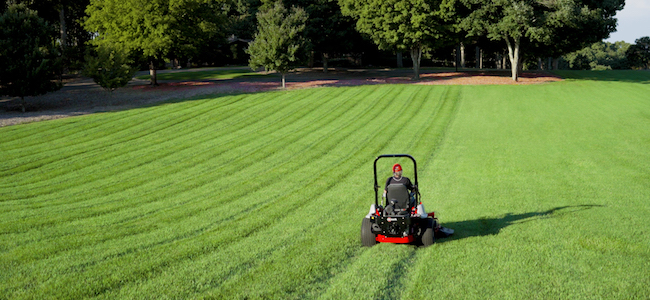Focus on Defense

Spring is just around the corner, which means many of us are starting to think about dusting off the lawn mower and gardening tools. But before you do, take the time to consider how you’re going to protect your lawn against weeds this year.
Sometimes the best offense is a great defense, and that applies as much to weed control as to football – if you take care of your turf, your turf will take care of the weeds on its own. If you properly fertilize your turf and raise the cutting height of your mower, your lawn will be healthier and the grass fuller, so that weeds have a harder time taking root. To protect your flower beds, you should mulch early in the year, which will serve the dual purpose of crowding out weeds while also fertilizing your flowers.
Herbicides
Herbicides are the most common option for getting and keeping weeds under control. You might consider using a pre-emergent herbicide early in the spring, which kills weeds before they have a chance to start sprouting. However, if you’re going to overseed your lawn, you’ll need to wait 6-12 weeks before doing so with some varieties. If you’re concerned about pesticides, corn gluten meal is an organic alternative that prevents weeds from taking root.
The window to catch the weeds before they start to sprout is limited, and varies by region. In the upper Midwest, that window usually opens around late April and closes in about early May. Check with your local extension office or lawncare supply store about what the window is in your area.
You should also keep in mind that the pre-emergent window can change from year to year. If your area had an unusually warm winter, you might want to start getting your herbicides ready a little early. In many areas, it’s common for the weather to go from winter to spring overnight, so plan ahead and be ready when temperatures start to rise. Typically, soil needs to be about 55 degrees Fahrenheit in order for the seeds to germinate, but again, check to see what the most common weeds in your area are and what temperatures are best for applying pre-emergent herbicides.
The best time to apply pre-emergent herbicide will also vary depending on the kinds of weeds you’re trying to kill. Early spring is the best time to get ahead of annual weeds, but for perennial weeds that lie dormant over the winter, like dandelions, applying herbicide in the fall may be a better option.
If weeds begin sprouting before you have a chance to apply any pre-emergent herbicide (or you have weeds that didn’t respond to the pre-emergent herbicide), you can pull by hand or treat with a selective herbicide that won’t kill your grass. For dandelions, you may be better off to spray than dig them out, due to their long taproot; if you don’t get at least two inches of it, they’ll grow back.
As a final note, don’t forget to check the label on whatever herbicide(s) you end up using, because that will tell you how long you can expect it to be effective and how long to wait between applying herbicide and planting grass, flowers, and shrubs.
SHARE





